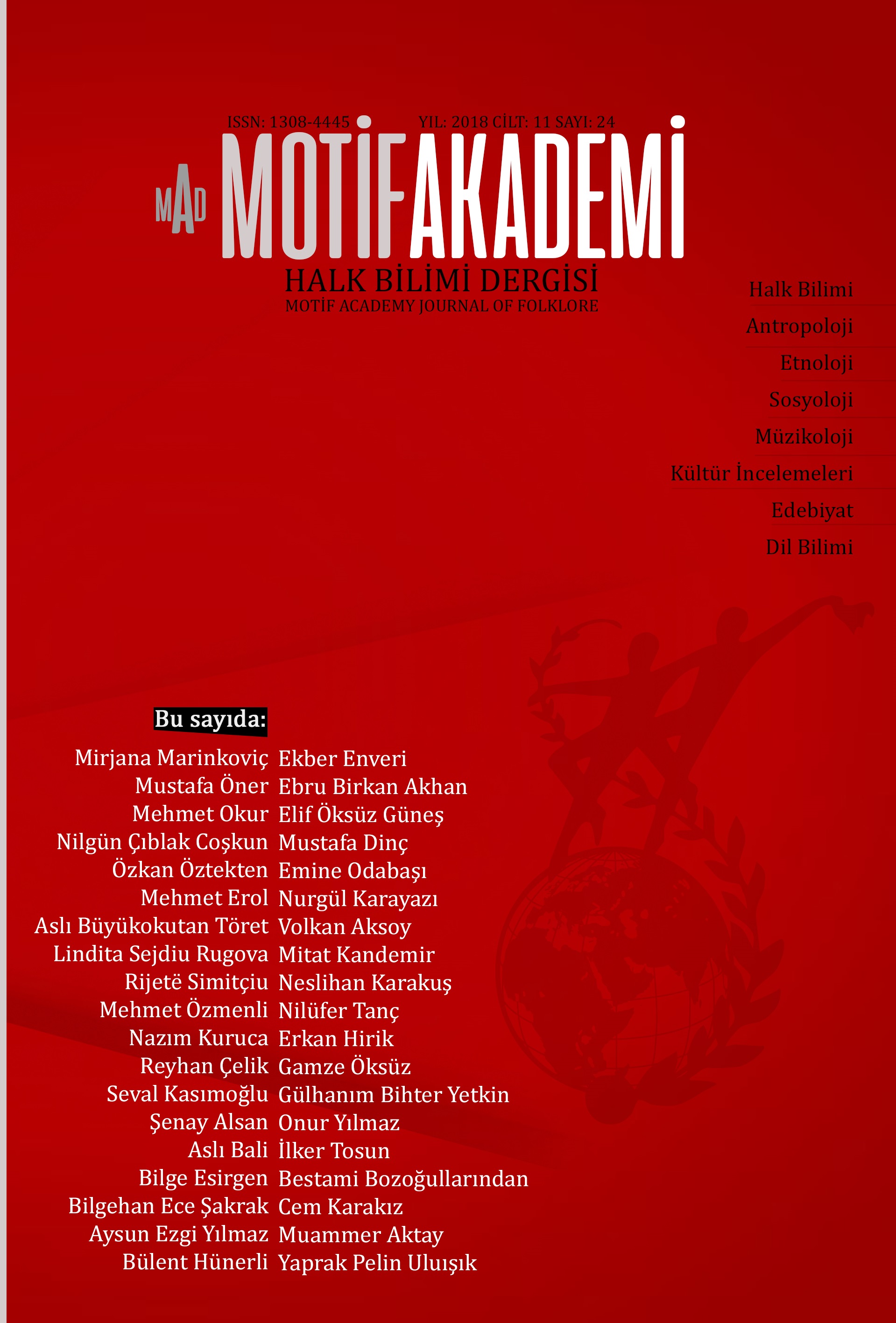GERÇEK YAŞAMDAN KURGUYA: PUŞKİN VE GORKİ’DE ÇİNGENELER
FROM REAL LIFE TO FICTION: GYPSIES IN THE WORKS OF PUSHKIN AND GORKY
Author(s): Gülhanım Bihter Yetkin, Gamze ÖksüzSubject(s): Comparative Study of Literature, Russian Literature, Evaluation research, Ethnic Minorities Studies
Published by: Motif Halk Oyunları Eğitim ve Öğretim Vakfı
Keywords: Gypsies; absolute freedom; love; Pushkin; Gorky;
Summary/Abstract: All around the world, the gypsies, who continue their existence as nomadic ethnic communities, attracted more and more attention from the end of the 13th century when they began to record their history. The first reflections of this socio-cultural group, which goes the boundaries of traditional lifestyle, in Russian literature occured in the 1740s. Before the romantic period, the search for what is ideal outside the civilized society, in nature itself, as well as the intense interest in the hidden and the passionate, changed people's views concerning gypsies; and after that period, gypsies became one of the focal points of artistic activities. From the second half of the 18th century, the gypsy people, living in a highly independent and unregistered way, began to take their place as main heroes in many Russian works. The most important example in the lyrical style in the 19th century, which is the golden age of Russian literature, is Alexander Pushkin’s poem Gypsies (Цыганы). The fact that Pushkin spent a couple of weeks in 1822 among nomadic gypsies and fell in love with a gypsy girl made the artist interested in this subject. Pushkin’s impressions and experiences, the characters he created, motifs and cliches he used found repercussions both in Russian and European literature; and thus, the interest in the theme of the gypsies has gradually increased in the following generations of authors. After Pushkin, in the 20th century Russian literature, the most prominent example of this interest in the gypsies is Maksim Gorky's short story, “Makar Chudra”. The story concerns a passionate love between two youths who sacrificed their love and eventually their lives. Although both authors are concerned with the lifestyle of gypsie and find a common ground with the murders committed because of the conflict between love and freedom, Pushkin, in his poem, interprets the story of the mysterious gypsies, whose origins have always been a subject of scrutiny, in a more poetic way under the influence of the prevailing romanticism in the period. The gypsies in Maksim Gorky's “Makar Chudra” differs in some aspects with the effect of the realist movement prevailing in the 20th century. In this study, the prominent gypsy characters, who never hold their freedom down, are examined with respect to both the way they are dealt with in the works and to the perspectives of the authors. At the same time, it is aimed through a text-based examination, to reveal how the theme of murder committed for absolute freedom threatened by love turned into an accepted ritual in the gypsy lifestyle.
Journal: Motif Akademi Halkbilimi Dergisi
- Issue Year: 11/2018
- Issue No: 24
- Page Range: 371-384
- Page Count: 14
- Language: Turkish

